Horizon Europe proposal tips: How to make your proposal stand out from the crowd?
Author
Marlene Kopf, PhD
Publication Date
September 12, 2023
Keywords
proposal tips
formal requirements
SMART objectives
added value
work plan
mitigation strategy
impact
risk assessment
dissemination plan
exploitation
Your microfluidic SME partner for Horizon Europe
We take care of microfluidic engineering, work on valorization and optimize the proposal with you
12 tips for a convincing proposal
Which proposals get funded and which don’t? Does that seem like rocket science to you? No worries – although it depends on many factors which projects get the go-ahead, there are some essential things you might consider to increase your chances of success.
Read our Horizon Europe proposal tips to help assemble an outstanding project proposal.
Tip #1 – Take your time!
To assemble your consortium and write a strong proposal without time pressure, allowing eight months of lead time for a full proposal or six months for a pre-proposal is best.
Tip #2 – Follow formal requirements and content guidelines.
- Applications must be complete and contain all parts, mandatory annexes, and supporting documents.
- Applications must be readable, accessible, and printable.
- Applications must include a plan for exploiting and disseminating results, including communication activities (not applicable for proposals at the first stage of two-stage calls or unless otherwise provided in the specific call conditions).

Eligibility is checked by EU staff: If you spot an issue, you should inform the EU staff.
- Eligible activities are the ones described in the call conditions.
- Minimum number of partners as set out in the call conditions (at least one independent legal entity established in an EU member state and at least two other legal entities established in a member state or an associated country).
- Participants that are public bodies, research organizations, or higher education establishments from member states and associated countries must have a gender equality plan in place. (The gender equality plan is not part of the evaluation criteria, but the existence of a gender equality plan is checked by EU staff.
- Other criteria may apply on a call-by-call basis as set out in the call conditions. In a few cases, the call conditions in the topic can modify the interpretation of criteria.
For more detailed explications, look at this document compiled by the European Commission.
To follow the requirements, one of the most essential, basic Horizon Europe proposal tips is:
Read the topic text carefully and relate the application precisely to the call text.
Proposals not precisely tailored to the call description are usually sorted out. Here is an example of phrases you should not neglect, taken from the call text of HORIZON-CL6-2024-ZEROPOLLUTION-02-2-two-stage.
“Expected Outcome:
Successful proposals will support researchers and innovators in improving bio-based systems’ environmental performance and circularity in industrial sectors. Project outcomes will contribute to enhancing circular bio-based systems operating according to planetary boundaries, replacing fossil-based systems and their carbon footprint, mitigating climate change, and protecting air, water, and soil quality along industrial value chains, in line with the European Green Deal and the EU zero pollution action plan.
Project results are expected to contribute to the following desired outcomes:
- …
- …
Scope:
Pollution from anthropogenic activities undermines the integrity of Earth’s ecosystems and severely affects the natural resources essential for human life. The EU bioeconomy strategy 2030 sets environmental protection as the basis of the modernization of bio-based industries in the Union to ensure a trustful green transition of the EU economy away from a linear fossil-based system.
To develop solutions for preventing and controlling pollution from bio-based industries, proposals should:
- …
- …
Where relevant, proposals should seek links with and capitalize on the results of past and ongoing EU-funded projects, including under the Circular Bio-based Europe JU and other partnerships of Horizon Europe.
In this topic, integrating the gender dimension (sex and gender analysis) in research and innovation content is not a mandatory requirement.
Specific Topic Conditions:
Activities are expected to achieve TRL 4-5 by the end of the project – see General Annex B.”
Tip #3 – Be accurate and appealing!
Avoid spelling errors and careless mistakes.
Format the text carefully.
Choose an attractive layout!
If possible, create a logo and use the colors used as a “corporate design” theme.
Tip #4 – Avoid text deserts.

Tip #5 – Make important information visible.
- Please leave a little space; filling all the space to the last page is unnecessary.
- Instead, be concise and precise.
Highlight important information. Whether by boldface, underlining or colored marking, or a frame around essential passages.
Name important things clearly; do not assume implicit knowledge!
Tip #6 – Use meaningful graphics.
Visualize and illustrate!
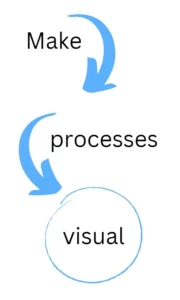
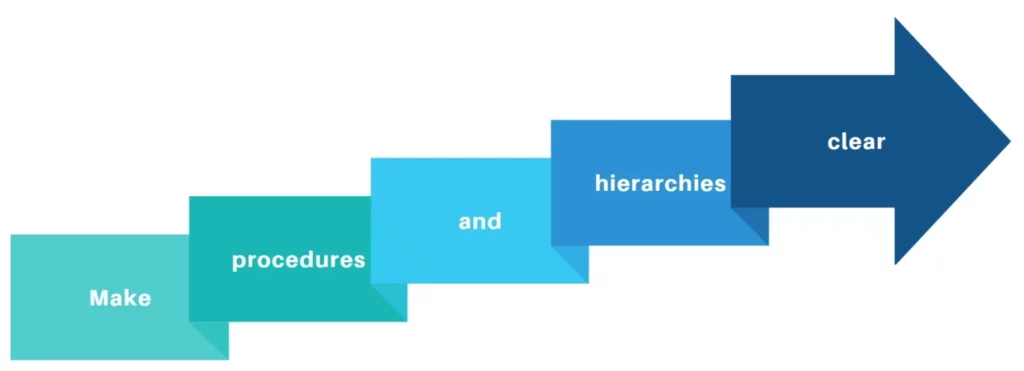
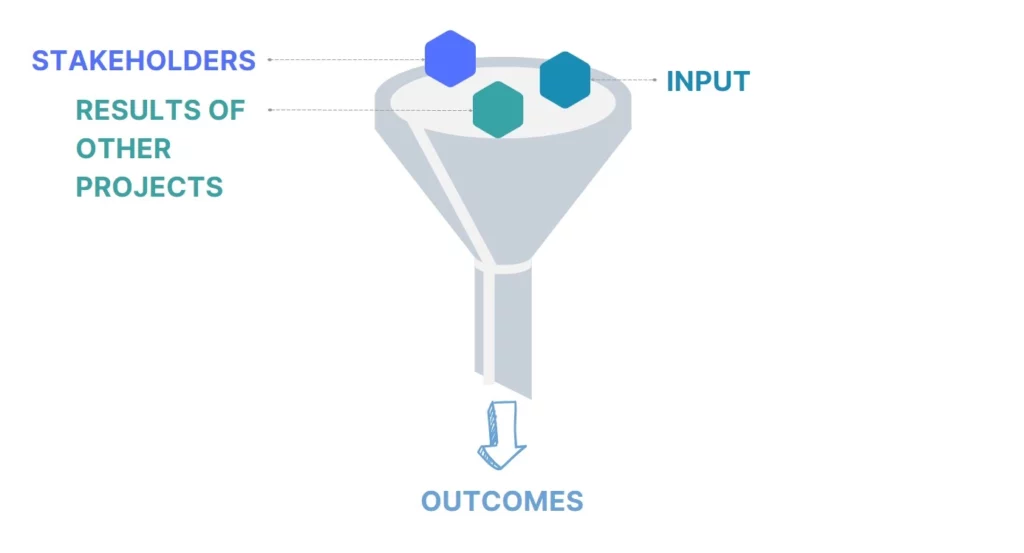
Tip #7 – Place information where reviewers expect and can find it.
Keep in mind the evaluation criteria that will guide the reviewers.
Excellence:
- Clarity and pertinence of the project’s objectives and the extent to which the proposed work is ambitious and goes beyond the state of the art.
- The soundness of the proposed methodology, including the underlying concepts, models, assumptions, interdisciplinary approaches, appropriate consideration of the gender dimension in research and innovation content, and the quality of open science practices, including sharing and management of research outputs and engagements of citizens, civil society and end users where appropriate.
See also our tips on writing an outstanding excellence section for more information beyond this Horizon Europe proposal tips list.
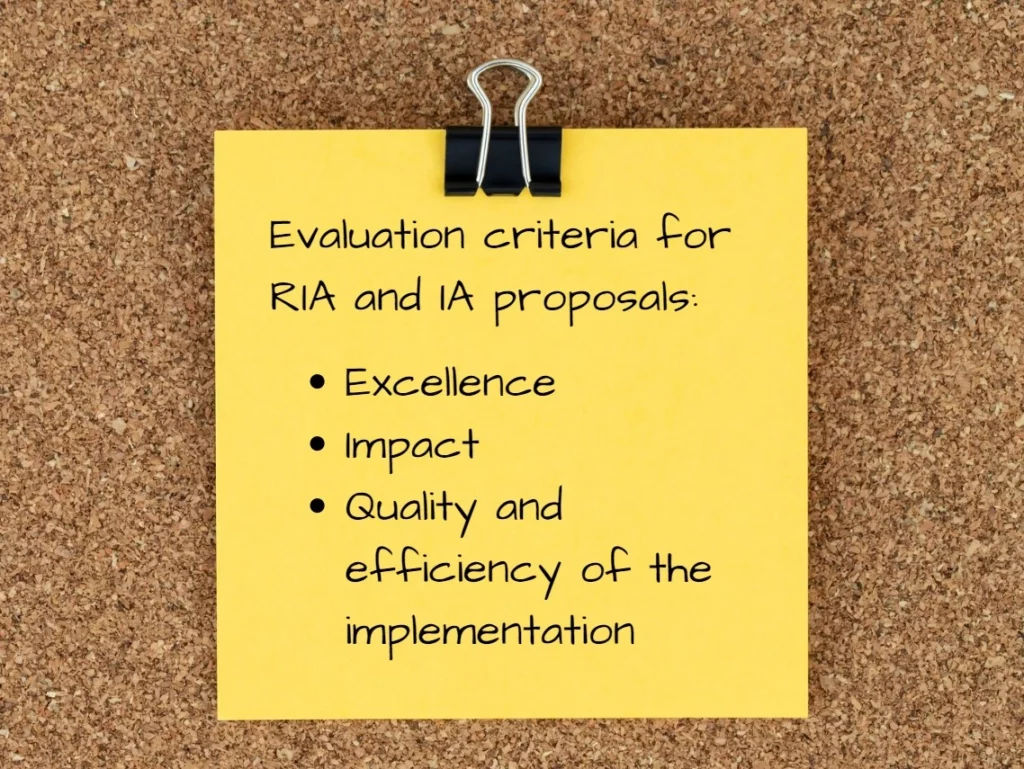
- The credibility of the pathways to achieve the expected outcomes and impacts specified in the work program and the likely scale and significance of the contributions due to the project.
- Suitability and quality of the measures to maximize expected outcomes and impacts, as set out in the dissemination and exploitation plan, including communication activities.
If you want to go further, we recommend considering our tips on optimizing the impact section to complement these Horizon Europe proposal tips.
Quality and efficiency of the implementation:
- Quality and effectiveness of the work plan, assessment of risks, and appropriateness of the effort assigned to work packages and the resources overall.
The capacity and role of each participant and the extent to which the consortium brings together the necessary expertise.
Source: ec.europa.eu
Tip #8 – Start writing with the impact section, part 2.3.
What the EU Commission expects from you is that you solve a societal challenge. It is looking for projects with a direct and concrete IMPACT on European citizens. Successful technology transfer from research to the real world is critical in Horizon Europe.
New in Horizon Europe: You should describe the Pathway to Impact that you imagine for your project. Please consider the expected outcomes and impacts set in the Work Programme and think of specific contributions of your project to them.
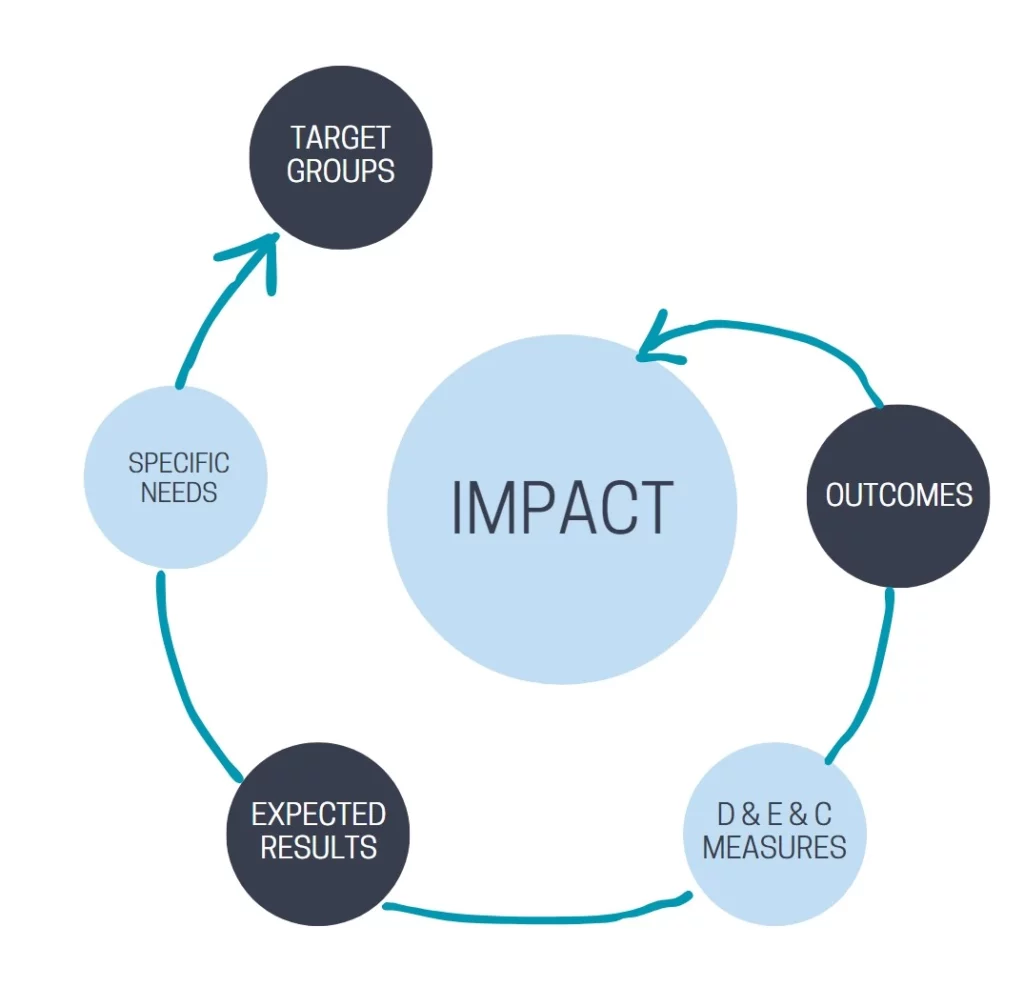
Tip #9 – Be honest.
Don’t hide obvious weaknesses or risks. Deal with them honestly and proactively. Show the reviewers that you can assess the risks well yourself.
Address these issues and indicate measures to mitigate the risks. If you feel something needs explanation, explain it.
Tip #10 – Consider the interdisciplinary composition of the panel of reviewers.

The panel of reviewers is very interdisciplinary. There can be experts from natural sciences, social sciences, industry, gender studies, and many more.
- It is not always easy to find consensus.
- Include all reviewers; do not assume specialized knowledge!
Tip #11 – Get advice.
Tip #12 – Evaluate yourself.
In the Funding & Tenders portal, you will find self-evaluation forms for different call types. They help to focus on the essentials in the proposal.
Last but not least, The abstract is essential.
Your request is just one of many. Stand out from the crowd immediately and make people want to read your proposal. Arouse curiosity and outline the specific problem, your approach, and your goals, and give a preview of the expected effects.
Make the abstract meaningful. Do not underestimate the abstract, even if you have followed all the Horizon Europe proposal tips above.


How long is the time to grant?
As a rule:
Evaluation results are communicated to the coordinating institution within five months after the last submission deadline.
The signing of the grant agreement takes place eight months after the last submission deadline.
Which documents are relevant?
We have compiled a list of links to documents provided by the EU Commission that are relevant to the application process:
- Strategic plan of Horizon Europe (2021-2024)
- Current work programmes (2023-2024)
- General annexes (2023-2024)
- Horizon Europe programme guide (2021-2027)
- Horizon Europe online manual (2021-2027)
- Some NCPs (National Contact Points) offer annotated application templates with additional tips that can be very helpful. Please ask your NCP for more information.
Check the Horizon Europe tips and tricks
FAQ - How to make your proposal stand out from the crowd?
What is a realistic amount of lead time that I should allow myself to prepare a proposal?
Eight months full proposals is not padding, it is in line with real cognitive requirements. Cosortium construction presupposes the creation of the real working relations, rather than gathering of the CVs. Next, there is iterative writing: writing, self-reviews, and alignment with the partner. Six months pre-proposals also require significant investment since such brief submissions need to be very clear. Late starts stranded partnership judgments and polluted the expression of your scientific story.
What are the reasons behind proposal elimination on admissibility grounds?
Since being straightforward does not imply being easy to implement under pressure. Missing required annexes are used in handling document versions between two or more partners when the deadline is at midnight. The requirement of the dissemination plan fails most; they put it in a shallow place, and all they are doing is including, not offering a serious strategy. An organizationally disorganized, technically readable proposal fails on the usability grounds.
So why focus on formatting when the content is what is important?
Thinking does not separate itself from visual display. Reviewers evaluate numerous offers when pressed in time- the working memory of a reviewer is limited. The blocks of text are thick, which leads to the cognitive load. There are also visual hierarchies in strategic white spaces, headings, and bullets that direct one to the vital points. It is cognitive ergonomics put into practice. Proposals that are well formatted save on the processing effort, thus enabling the reviewers to be involved in science, as opposed to getting lost in presentation.
To what extent is too much visual enough?
The border lies between the graphics that will no longer enlighten and the graphics that will start to distract. Each visual must have a load of information – explaining how relations work, depicting statistics, processes. In the event that you are unable to explain what particular insight a graphic gives that cannot be offered by text alone, eliminate it. The reason processes flows, hierarchical structures, funnel diagrams work is due to the fact that they condense the complicated information into scannable formats at a rapid rate. Three graphics that convey the same message indicate duplicity and not reinforcement.
What is meaningful highlighting?
Significant focus is made on truly important information, including specific goals, new techniques, measurable results, critical risks. It manages to be ineffective with over usage; when all things are bold nothing is different. Make it work on information you do not want to miss as that would affect the comprehension of the main logic in your proposal. Switch and change bold, underline, color, boxes in order to establish levels of emphasis instead of an even emphasis.
The reason to start writing with the impact section?
Impact is what determines the purpose to which excellence and implementation should be. To begin with methodology would be a mistake in establishing technically impressive ways of action that are not in line with the call matter of impact. This beginning with impact forces makes the clarity of ends before means that is, what change will your project bring, to whom, in what ways. This determines all other things: there are impacts that objectives should cause, there are ways that should be appropriate to these impacts; the consortium must have the means of execution.
What do I do to highlight the weaknesses without compromising on the competitiveness?
The difference is between risk admissions and lack of preparedness. Any ambitious project is associated with uncertainties, the reviewers anticipate this. The thing that they punish is ignorance or the lack of mitigation measures. Organize current threats: specification, estimation of likelihood and severity, specific mitigation plan, contingency plan. This portrays mature project management. Concealing blatant risks implies incompetence or lies both of which are deadly to the confidence of reviewers.
What is the meaning of interdisciplinary reviewer composition to the writing strategy?
It is not possible to presuppose specialized knowledge. Words that seem normal to you might seem opaque to the social scientists; the ordinary methodological approach might have to be described to the industry professionals. This does not imply simplifying to the point of losing expertise; it simply involves making expertise accessible without sacrificing accuracy. Explain technical terms on the first occurrence. Offer methodological background. Discuss importance of findings not make assumptions of being known. A physicist ought to have an idea of your biological innovations; a gender studies professional ought to comprehend your technical input.
What is compelling about an exploitation plan?
Preparation evidence in concrete. Identified partners in commercialization situations are part of the convincing exploitation, preliminary market analysis with data, IP protection strategy, regulatory awareness, temporary business models. Did you call prospective licensees? Analyzed competitors? Discussed regulatory specialists? The distinction is like science methodology- it provides evidence of claims of commercial potential instead of making claims of commercial potential.
What is the impact of evaluation criteria on reviewer assessment?
They offer frameworks of scoring. Each criterion is further divided into sub-elements, which the reviewers need to respond clearly and explicitly. In the case of Excellence, they evaluate the presence of clear objectives, sound methodology, and approaches that go beyond state-of-the-art. They are not able to use high scores without referring to certain demonstrating material. The information has to be easily found and each of the criteria has to be explicitly addressed in your proposal. Distributed methodology discourse compels reviewers to grapple with integrating coherent assessment.
So what is the difference between outcomes and impacts?
Direct project results are outcomes – publications, prototypes, datasets, trained researchers. They are the output of your project. These make possible more far-reaching, long-term impacts, which include: better practices, new policies, new areas, new competitiveness. Outcomes cause impacts but not necessarily. Weakness on common: recording publications as impact and not result. Reviewers evaluate the plausibility of the alleged consequences among claims of results based on expected outcomes and the plausibility of dissemination plans to make this connection.
Should the services of National Contact Point be utilized by experienced applicants?
NCP review is beneficial to even advanced consortia. NCPs are exposed to hundreds of proposals per year – they can identify trends in successful and unsuccessful submissions. They pick up those things that you have grown to be blind to because of overexposure. They define where their explanation can be easily misunderstood by people reviewing your work. They are aware of pitfalls that are common to types of calls. Consider it as peer review prior to submission as opposed to remedial assistance.
How crucial is the abstract?
Significantly important in its own right. The abstract predetermines the impressions of the first reviewers, as a study on cognitive bias indicates that such impressions have a strong impact on later assessment. Proposal shorthand is also referred to as abstracts in panel discussions. Strong abstracts pose a good start; weak abstracts pose a doubt that your proposal has to overcome. Use it like your elevator pitch- present the importance of the problem, innovative solution, anticipated results and possible impact in a non-specialist way.
When do I file it and drop the revision?
When the changes are more marginal touch-ups than major enhancements. There exists a curve of revision, where initial steps will result in a significant improvement but subsequent steps will only result in the marginal improvement and the chance of new mistakes. Establish a deadline 48 hours before the deadline- this gives a buffer for technical problems. Check on systematic checks on use final hours: have all sections addressed evaluation criteria? Is there accuracy in cross-references? Are there budgets of partner contributions? Is formatting consistent? Does it have any obligatory components? The foe of yielded is a perfect one.